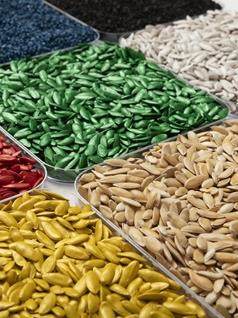The new microplastics legislation - what does it mean for seed treatments and coatings?
New rules banning ‘intentionally added microplastics’ from EU/EEA products – proposed by the European Chemicals Agency (ECHA) – are expected to be adopted into EU legislation by 2023. If all continues as expected, seed companies will be obliged to remove intentionally added microplastics from seed coating binders by January 2028 and from plant protection products by January 2031.
Seed treatment companies therefore need to start making decisions about their future products based on this legislation, as do their customers.
What exactly is a microplastic?
The starting point for these decisions is understand what exactly a microplastic is. Although this has not yet been formally defined, there is wide consensus on the description provided by the ECHA.
An intentionally added microplastic is described by the ECHA as a polymer-containing solid or semi-solid particle with dimensions between 100nm and 5mm. Exemptions will apply to polymers that are sufficiently biodegradable, biobased or water soluble. This is likely to be the basis of the final definition.
Anything that is obviously a solid polymer will be out. But where there is any doubt, companies need to show their product meets one three criteria prove it is microplastic-free: (a) water soluble; (b) 100% extracted from nature without chemical modification; or (c) biodegradable according to the proposed criteria
What doesn't count as a microplastic?
Polymers that dissolve in water are unlikely to contribute to microplastic concerns, and so should not be a problem. 2 grams per litre has been proposed as a threshold. Particles with this solubility will lose their particle form once in the environment and will therefore not contribute to the microplastic concern.
Products based on natural raw materials such as starch or sugar should be fine since they are inherently biodegradable. But even small chemical modifications, can turn these into microplastics, as defined by the rules – for example, many biobased plastic alternatives use chemical crosslinking to give a material the functionality of plastic, including low biodegradability. This may then count as a microplastic if it does not biodegrade fast enough.
Agreement is still needed on what level of biodegradability is acceptable. The latest proposal includes standard OECD and ISO methods that are used to assess the biodegradability of chemicals.
Get ready for the new rules on microplastics
Once the legislation comes in, there will be a range of new rules to adhere to, some of which will dramatically reshape product portfolios. The transition timeframe may be short. The industry would be wise to start familiarising itself with the legislation as soon as possible and directing its R&D accordingly.
Incotec/Croda have developed expertise on the legislation, as well as on assessing whether products contain microplastics, and developing microplastic-free products. For more information contact Marta Dobrowolska-Haywood.
Whitepaper - A microplastic-free future for seed treatments
